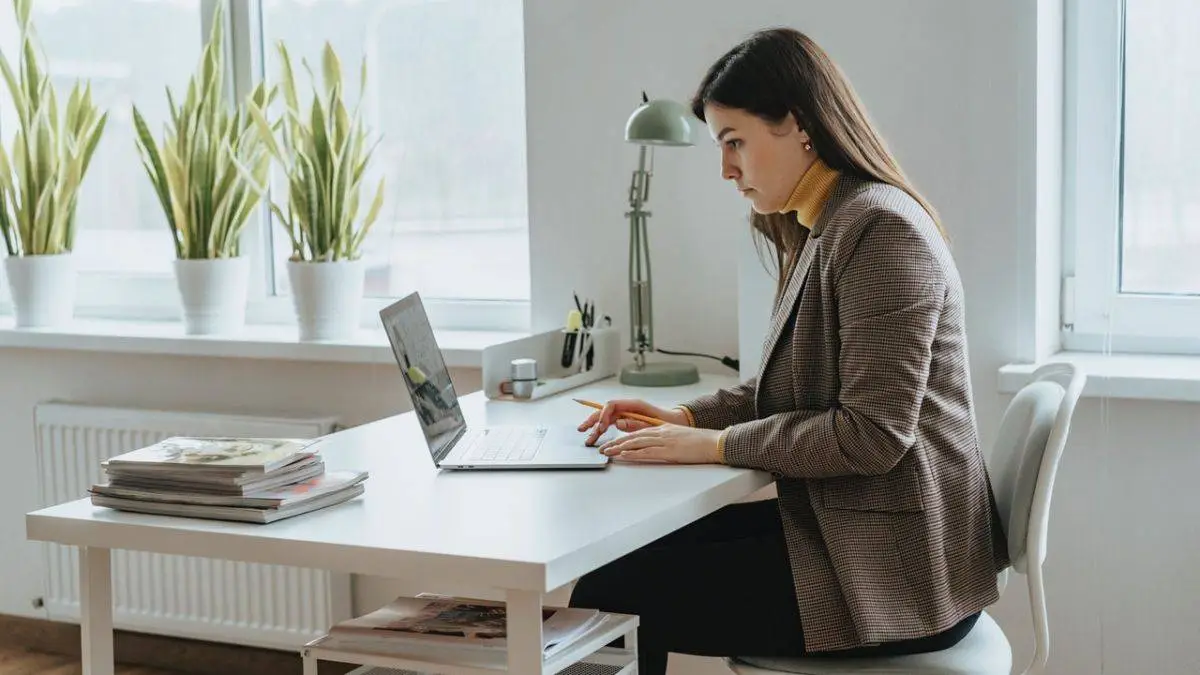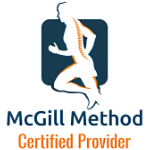Article Blog Post
Tips to Avoid Back Pain and Injury While Working From Home
- Caitlin Camisa

Quest for the Perfect Chair
The perfect chair doesn’t exist, but these practices can help. While most of us know that plopping ourselves on the couch with a laptop on our legs isn’t the most ergonomic choice, few of us have much experience in setting up our own workspace or the right furniture and equipment on-hand.
We reached out to Dr. Stuart McGill to find out how we can make the shift to working at home while minimizing the chance of injury. McGill is Professor emeritus of Biomechanics at the University of Waterloo, and author of Back Mechanic: The step by step McGill Method to fix back pain, and Low Back Disorders: Evidence-Based Prevention and Rehabilitation.
Your Chair Is Not as Important as You Think
McGill says that back pain and work-related injuries are caused when we put too much stress on the tissues in our bodies. And the stresses on our bodies can vary with force (e.g. the weight of the object we’re lifting), repetition, and time.
When we recently talked to him about posture fixer-uppers, McGill said our posture distributes these stresses throughout the body. Some postures put a lot of stress in specific areas, and therefore can cause problems in a short amount of time. For example, he says, “Lying in bed with your head propped up on a pillow and your laptop on your knees is the path to pain for both your neck and low back.”
Sitting in an upright position will provide a more even distribution of stress, but this doesn’t mean that holding that posture all day will spare your back. This is because if you spend too much time in any one posture the stresses accumulate and can cause damage. This means that there is no such thing as “perfect posture”, nor is there a perfectly designed ergonomic chair that makes you impervious to back pain.
Instead, McGill thinks that things like strategically planning your work day, varying your position, and building core fitness can all preserve your back health more effectively than the most expensive ergonomic furniture. These are his top tips for staying healthy and pain-free while working from home.
Sitting in an upright position will provide a more even distribution of stress, but this doesn’t mean that holding that posture all day will spare your back. This is because if you spend too much time in any one posture the stresses accumulate and can cause damage.
Tips for Home-Office Back Health
01 Avoid “bad” postures: While there’s no perfect posture for longer periods of time, some postures are worse for almost everyone because they put a lot of stress in vulnerable areas. Lying down with your head propped up puts a lot of pressure on your neck. Slouching puts strain on your lower back and will be more problematic for people who get back pain. Instead, try to keep your spine in a natural neutral position (preserving the hollow arch in the low back).
02 Desk set-up basics: Adjust the height of the monitor to maintain a level gaze and de-stress the neck. You can use things like books to raise the height of a laptop or desktop. Rest the heels of the palms on a rest and type. Increase text size or wear computer glasses to reduce the need to poke the head forward to read the screen.
03 Switch chairs throughout the day: McGill recommends switching between different chairs or sitting surfaces. Some people find comfort sitting on a gym ball for half an hour then changing to an office chair. The key here is not to spend too long in any single position. Change positions to migrate stress to different tissues.
04 Adjust your chair, then adjust it again: The notion that an ergonomic chair is a cure-all is a myth. The best ergonomic chair isn’t the one that can achieve the “best” position; it’s one that facilitates posture change. If you have a chair that allows you to adjust the height and angle of the seat and backrest, use those features to vary your position frequently.
05 Remove the wallet from the back pocket: Sitting on a wallet causes point compression on the hip joint and piriformis muscle that is often a clinical issue. It also can cause the pelvis to tilt to one side placing more stress on the spine.
06 Schedule variety into your workday: Plan activities that vary your posture and movements at intervals throughout the day. If you do primarily desk work, try to break it up with tasks that get you out of your chair, like standing for calls if you can. Stand for calls if you can. Take frequent breaks. A good rule of thumb is to stand up every 20 minutes (see the standing stretch below)
07 Do the standing stretch: If you sit a lot, stand up from your chair. Start by raising your arms overhead and hold for ten seconds. Then reach higher and farther back for another ten-count. Inhale deeply, working into an upright and stress-free standing posture. Drop your arms and relax. This stretch measurably dispels cumulative stress on the spinal discs. Do it throughout the day
08 Breaks should be the opposite of work: Your breaks should be the opposite of the dominant physical demand of your work. If you usually stand when working, have a seat for your break. If you usually sit, a rest break is walking. If you sit while working, don’t also sit during your lunch break.
09 Do the “Big Three” core exercises: Do the curl-up, the bird dog, and the side plank everyday. Together, they will build resilience and capacity to do your work. Note that your spinal discs are swollen when first rising in the morning, which can increase bending stress. Therefore, lunchtime is ideal for these exercises.
What if I Have a History of Back Pain?
01 Pay attention to your pain: Identify your pain triggers and learn to make posture adjustments to avoid them. This includes modifying key exercises such as the Big Three (above). McGill’s Back Mechanic offers self-assessment exercises and strategies for addressing specific pain mechanisms.
02 Try a lumbar support: Often a little support in the lower back can help with back pain. This can be a rolled up towel or even an adjustable pneumatic support.
03 Avoid stretching immediately after waking up: While this may provide temporary relief from pain, it will cause more aggravation once the analgesic effect wears off. Wait an hour or so instead.
